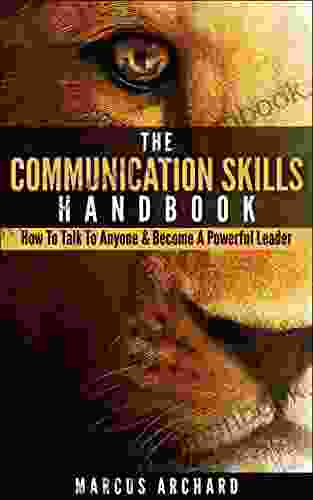K9 Academy: Dog Body Language: Understanding Canine Body Language Training Made Simple

Canine body language is a fascinating and essential aspect of dog communication. Just like humans, dogs convey a wide range of emotions and intentions through their physical postures, facial expressions, and vocalizations. As dog owners, it's crucial to understand these subtle cues to effectively interact with our furry companions and ensure their well-being. This comprehensive guide will delve into the intricacies of canine body language, providing practical training tips to help you interpret and respond to your dog's nonverbal expressions.
Decoding Doggy Expressions: A Guide to Canine Body Language
Tail Wagging
The classic "happy tail" is a familiar sight, but the truth is, tail wags can convey a myriad of emotions. A slow, relaxed wagging motion typically indicates contentment, while a high, rapid wagging may signal excitement or arousal. A tail held low or tucked between the legs, on the other hand, often indicates fear or submission.
4.3 out of 5
| Language | : | English |
| File size | : | 1556 KB |
| Text-to-Speech | : | Enabled |
| Screen Reader | : | Supported |
| Enhanced typesetting | : | Enabled |
| Print length | : | 20 pages |
| Lending | : | Enabled |
Ears
A dog's ears are another expressive feature. Pricked-up ears convey alertness and attention, while relaxed or flattened ears may indicate submission or anxiety. A dog shaking its head while keeping its ears back is a clear sign of discomfort or a desire to shake off something.
Eyes
The eyes are often referred to as the "windows to the soul," and this is no less true for dogs. Direct eye contact can indicate aggression or dominance, while avoiding eye contact is often a sign of submission or avoidance.
Body Posture
The way a dog holds its body conveys a wide range of emotions. A dog that stands tall and proudly is confident and assertive, while a dog that crouches down or lowers itself to the ground is fearful or submissive.
Vocalizations
Vocalizations are an important part of canine body language. Barking, growling, howling, and whining are just a few of the sounds dogs use to communicate. The context and tone of these vocalizations are crucial to interpreting their meaning.
Practical Training Tips to Decode Your Dog's Body Language
Start Slowly and Observe
Begin by observing your dog's body language in different situations. Pay attention to how their eyes, ears, tail, and body posture change in response to various stimuli. This will help you establish a baseline for understanding their expressions.
Use Positive Reinforcement
When your dog exhibits behaviors that indicate positive emotions, such as a relaxed tail wag or happy panting, reward them with treats or praise. This helps reinforce the desired behavior and strengthens your bond with your furry friend.
Learn to Recognize Calming Signals
Dogs often use calming signals to avoid conflict or diffuse tense situations. These signals include yawning, lip licking, and turning away the head. By recognizing these signals, you can prevent misunderstandings and foster a harmonious environment.
Context is Key
It's essential to consider the context when interpreting your dog's body language. A wagging tail, for example, may indicate happiness in one situation but excitement or anxiety in another. Observing your dog's overall behavior and the surrounding environment will help you better understand their intentions.
Seek Professional Help if Needed
If you're struggling to interpret your dog's body language or if you notice any sudden or unusual changes in their behavior, don't hesitate to consult with a veterinarian or a professional dog trainer. They can help rule out any underlying medical or behavioral issues and provide valuable insights into your dog's communication.
Communication is a Two-Way Street
Understanding canine body language is not just about passively observing your dog. It's also about communicating effectively with them. Here are some tips to help you convey your thoughts and emotions clearly:
Use Clear Nonverbal Cues
Dogs are highly receptive to nonverbal cues, so it's essential to be mindful of your body language. Maintain a calm and relaxed posture, and avoid making sudden movements or loud noises.
Use a Positive Tone of Voice
The tone of your voice can have a significant impact on your dog's interpretation of your words. Speak in a friendly and soothing tone, and avoid shouting or scolding.
Be Patient and Consistent
Communication with dogs requires patience and consistency. It takes time for them to learn and understand what you want from them. Be patient and consistent with your training, and don't get discouraged if your dog doesn't get it right away.
The Power of Understanding Canine Body Language
Understanding canine body language offers a unique opportunity to connect with your dog on a deeper level. By deciphering their nonverbal cues, you can:
Enhance Training
Effective training relies on clear communication. By understanding your dog's body language, you can tailor your training methods to their individual needs and motivations.
Prevent Misunderstandings
Misinterpreting your dog's body language can lead to misunderstandings and potential conflicts. By being able to accurately interpret their cues, you can avoid unnecessary confrontations and foster a harmonious relationship.
Strengthen Your Bond
Communication is essential for any relationship. By understanding your dog's body language, you can build a stronger and more fulfilling bond with your furry companion.
Canine body language is a rich and complex form of communication that allows dogs to convey their emotions, intentions, and needs. By understanding these subtle cues, we can become more effective dog owners and provide our furry friends with the love, care, and support they deserve. Remember, communication is a two-way street, and by being mindful of our own body language, tone of voice, and patience, we can create a mutually rewarding relationship with our canine companions.
4.3 out of 5
| Language | : | English |
| File size | : | 1556 KB |
| Text-to-Speech | : | Enabled |
| Screen Reader | : | Supported |
| Enhanced typesetting | : | Enabled |
| Print length | : | 20 pages |
| Lending | : | Enabled |
Do you want to contribute by writing guest posts on this blog?
Please contact us and send us a resume of previous articles that you have written.
 Top Book
Top Book Novel
Novel Fiction
Fiction Nonfiction
Nonfiction Literature
Literature Paperback
Paperback Hardcover
Hardcover E-book
E-book Audiobook
Audiobook Bestseller
Bestseller Classic
Classic Mystery
Mystery Thriller
Thriller Romance
Romance Fantasy
Fantasy Science Fiction
Science Fiction Biography
Biography Memoir
Memoir Autobiography
Autobiography Poetry
Poetry Drama
Drama Historical Fiction
Historical Fiction Self-help
Self-help Young Adult
Young Adult Childrens Books
Childrens Books Graphic Novel
Graphic Novel Anthology
Anthology Series
Series Encyclopedia
Encyclopedia Reference
Reference Guidebook
Guidebook Textbook
Textbook Workbook
Workbook Journal
Journal Diary
Diary Manuscript
Manuscript Folio
Folio Pulp Fiction
Pulp Fiction Short Stories
Short Stories Fairy Tales
Fairy Tales Fables
Fables Mythology
Mythology Philosophy
Philosophy Religion
Religion Spirituality
Spirituality Essays
Essays Critique
Critique Commentary
Commentary Glossary
Glossary Bibliography
Bibliography Index
Index Table of Contents
Table of Contents Preface
Preface Introduction
Introduction Foreword
Foreword Afterword
Afterword Appendices
Appendices Annotations
Annotations Footnotes
Footnotes Epilogue
Epilogue Prologue
Prologue Jeffrey Koval Jr
Jeffrey Koval Jr Paul Midler
Paul Midler Meredith Mansfield
Meredith Mansfield Donald S Passman
Donald S Passman Buddha Dhamma
Buddha Dhamma Robert Kuttner
Robert Kuttner Barbara Sheklin Davis
Barbara Sheklin Davis Faye Kellerman
Faye Kellerman Tom Wolfe
Tom Wolfe Eswar S Prasad
Eswar S Prasad Herman Lehmann
Herman Lehmann Thomas M Van Soelen
Thomas M Van Soelen Danielle Gomez
Danielle Gomez Wayne Visser
Wayne Visser John Cooper Clarke
John Cooper Clarke Greg Paull
Greg Paull Ben Raines
Ben Raines Michael Brown
Michael Brown Leena Darling
Leena Darling Sachin Kumar
Sachin Kumar
Light bulbAdvertise smarter! Our strategic ad space ensures maximum exposure. Reserve your spot today!

 Anthony BurgessOne Woman's Lifelong Journey with Ehlers-Danlos Syndrome: A Personal Account...
Anthony BurgessOne Woman's Lifelong Journey with Ehlers-Danlos Syndrome: A Personal Account... Warren BellFollow ·13.6k
Warren BellFollow ·13.6k Harold PowellFollow ·14k
Harold PowellFollow ·14k Mike HayesFollow ·10.7k
Mike HayesFollow ·10.7k Nick TurnerFollow ·9.9k
Nick TurnerFollow ·9.9k Noah BlairFollow ·16k
Noah BlairFollow ·16k Ismael HayesFollow ·2.7k
Ismael HayesFollow ·2.7k Kelly BlairFollow ·3.3k
Kelly BlairFollow ·3.3k Cade SimmonsFollow ·10.6k
Cade SimmonsFollow ·10.6k

 Kelly Blair
Kelly BlairSheppard Lee Written By Himself: A Journey of...
In the realm of...

 George Bernard Shaw
George Bernard ShawViper Naga Brides: Unveiling the Enthralling Fantasy...
In the realm of...

 Neil Gaiman
Neil GaimanOnce Upon a Hill in Tuscany: A Medieval Short Story
In the heart of medieval...

 Preston Simmons
Preston SimmonsBody Bereft: Exploring Loss, Love, and Legacy in Antjie...
A Poetic Requiem for the Lost:...

 Percy Bysshe Shelley
Percy Bysshe ShelleyThe Amazing Story Of Robert Smalls Escape From Slavery To...
The life of Robert Smalls is a testament to...
4.3 out of 5
| Language | : | English |
| File size | : | 1556 KB |
| Text-to-Speech | : | Enabled |
| Screen Reader | : | Supported |
| Enhanced typesetting | : | Enabled |
| Print length | : | 20 pages |
| Lending | : | Enabled |












